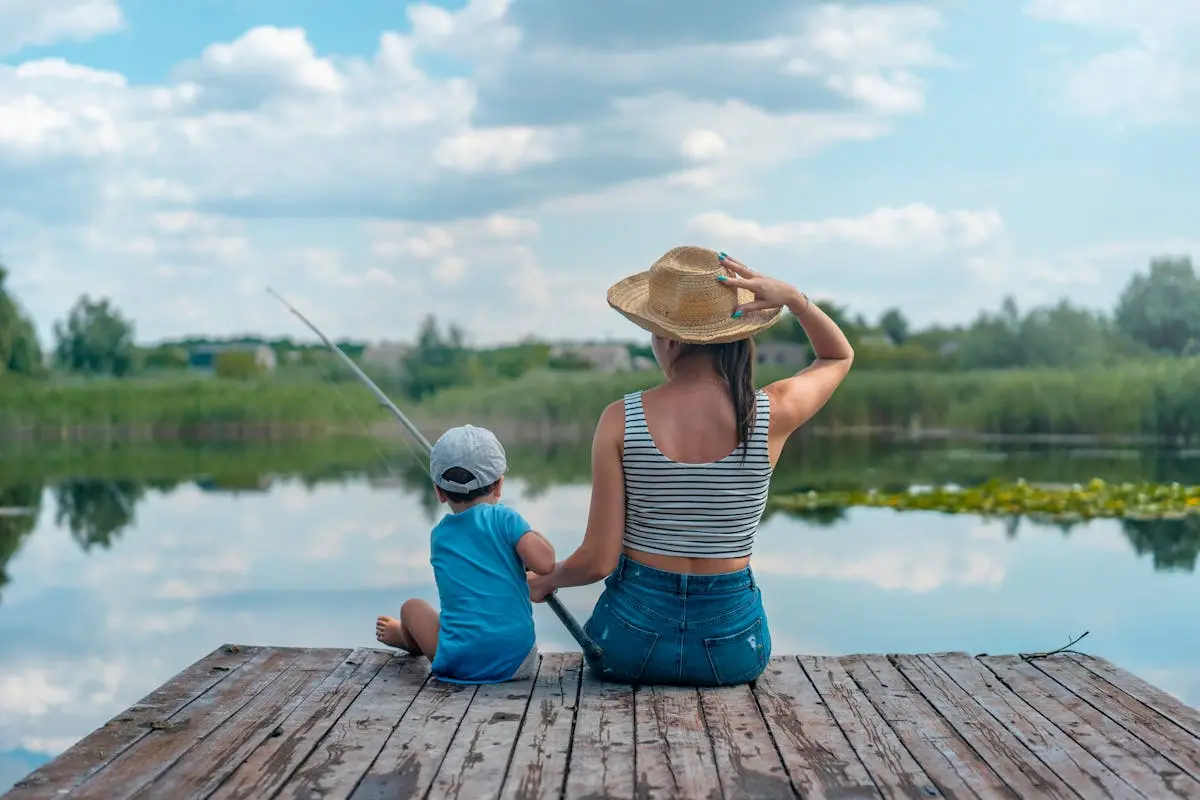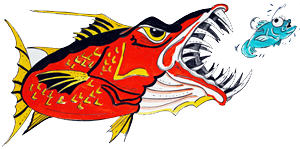Introduction to Fishing Techniques for Beginners
When you’re just dipping your toes into the vast pool of fishing, it can feel like there’s an ocean of techniques to understand. Relax, it’s simpler than it seems. First off, fishing isn’t just about throwing a line and hoping for the best. Each method has its own charm and is suited to certain types of fish and environments. For starters, you’ve got still fishing, which is as chill as it sounds. Just cast your line, sit back, and wait for a bite. Easy, right? Then there’s spinning, where you cast a lure and reel it back in, mimicking the movement of prey to entice fish. If you’re into a bit of action, this might be your pick. Getting into fly fishing is like learning an art form—here, it’s all about delicate casts and fooling fish with fly lures that float on the water’s surface. Each method requires some practice, but hey, the joy of fishing comes as much from the experience as it does the catch. So, grab your rod and tackle box, and let’s ease into the flow of fishing techniques one cast at a time.

Essential Fishing Gear for Starters
To start your fishing adventures, you’ll need the right gear and it doesn’t have to be fancy. Simple tools do the job. First, grab a durable fishing rod and reel combo suited for beginners; it’s the heart of your setup. Take a look at the fishing line; monofilament is user-friendly for new anglers. You’ll also need assorted hooks to catch different fish and a selection of sinkers to cast your line deeper. Don’t forget a bobber for bite indication and a tackle box for keeping all your gear organized. Picking up a handy pair of pliers and a good fillet knife will make handling your catches easier. Before you hit the waters, make sure to have fishing bait or lures; worms are a common bait that many fish love. And lastly, always pack sunscreen and a hat; skin protection is key while spending hours outdoors. With this essential gear, you’ll be set to cast your line and reel in some fun!
Understanding Different Types of Fishing Techniques
To hook that big catch, you gotta know the ropes of different fishing methods. First up, you’ve got bait casting – perfect for the ones aiming to reel in the heavyweights. Now, we slide into fly fishing; it’s all about fooling fish with fake bugs that float or dive. This one’s an art, really takes skill and grace. Next, there’s the good ole’ spinning; it’s versatile and a solid choice for rookies and pros alike, works like a charm in various conditions. And hey, don’t overlook trolling – it’s the laid-back way to fish, just trailing a lure behind a moving boat. Then there’s surf fishing, just you against the waves, casting from the shoreline. Each method’s got its own tricks, so pick one, get the hang of it, and you’re all set for a great day on the water.
Basics of Bait Fishing
Bait fishing is simple. You need a hook, line, and the right bait. Live bait like worms, minnows, or insects are great for attracting fish because they move and smell like food. If you prefer not to use live bait, there are artificial options like plastic worms that also work well. Remember, the key is to make your bait resemble real fish prey as much as possible. Cast your line into the water, wait for a fish to bite, and then gently tug to set the hook. The patience game is strong with bait fishing, but the rewards are plenty when you reel in that catch.
Getting Started with Fly Fishing
Fly fishing might seem tricky, but it’s just about knowing the basics. First, you need a fly rod and reel, and yes, there’s a bit of technique to casting. Picture yourself on a river bank, flicking your wrist, and sending that fly to the perfect spot. Here’s how you start: grab some lightweight line, it helps with those smooth, snappy casts. Also, you’ll need flies—those little lures that look like insects. They’re the key to tempting the fish. Now, for the stance, stay balanced and use your forearm, not just your wrist. Once you’ve got a rhythm, it’s all about patience. Reading the water is crucial too. Look for spots where fish might hide or hunt. Fly fishing is as much about enjoying the serenity as it is catching fish. The key is to practice, so don’t worry if you’re not landing every cast perfectly. Keep at it, and soon you’ll feel the thrill of a fish on your line.
The Art of Trolling in Fishing
When you hear trolling in fishing, drop the internet memes; it’s a time-honored strategy where you cast a baited line out from a moving boat and wait for the bite. It’s like sending a dinner invitation to fish while you cruise the waters. Trolling is ideal in vast water areas, particularly when you’re hunting game fish. It’s less a lazy Sunday pastime and more of a tactical maneuver.
You set the scene with rods, reels, and lures that mimic wounded prey. They dance in the water as your boat hums along, too tempting for any big fish to ignore. Speed matters – go too fast, and you’ll spook them, too slow, and they’ll sniff out the ruse. Think of Goldilocks; you want it just right. Set your gear at different depths to cover more water and increase your odds.
To nail this technique, it’s not just about the gear but also about reading the water. You look for signs: circling birds, jumping fish, or underwater structures where fish might feed. Trolling is a mix of patience, skill, and a bit of luck. Often, it’s the thrill of the chase that hooks you even before the fish bites.
Spin Fishing: A Popular Choice for Beginners
Spin fishing wins the hearts of many newcomers eager to reel in their first catch. It’s a straightforward technique that uses a spinning reel and rod. The setup is a breeze. All you need is a rod, reel, line, and lure or bait and you’re set for action. Cast your line, wait for a bite, then bring in your catch. It’s that simple! Perfect for those starting out, spin fishing allows you to target a range of fish in both fresh and saltwater. It’s versatile too, suitable for lakes, rivers, or the open sea. The method gives beginners a good chance to land fish without needing the intricate skills fly fishing demands. So, grab your tackle, and let’s get fishing—you might just hook a whopper.
Ice Fishing Fundamentals for the Adventurous Angler
When you’re eager to tackle the chill and hook some fish in ice-cold waters, there are a few basics you’ll need to get a grip on. Ice fishing isn’t just about patience, it’s about the right gear and knowing the ice. First, make sure the ice is thick enough and solid—it has to be at least four inches. This isn’t the time to guess; a wrong move could be a cold plunge you’re not ready for. You’ll need an auger, that’s a fancy word for a special drill, to cut a hole in the ice. Some anglers prefer a manual auger, but if you don’t want to break too much sweat, powered versions are your friends. Look into getting a good fishing rod, specifically designed for ice fishing, with a sensitive tip to notice those subtle bites. And hey, don’t forget the bait – live ones often work best in these cold waters. Lastly, while you’re trying to outsmart the fish below the ice, don’t let the cold beat you. Dress warmly in layers and maybe bring a portable shelter, unless you’re a fan of turning into a human popsicle. Get these fundamentals down and you’ll be on your way to mastering the icy waters!
Tips and Tricks to Improve Your Fishing Technique
Fishing isn’t just about sitting by the water and hoping the fish bite; it’s an art, and like any craft, there are ways of sharpening your skills. To reel in that big catch, focus on your casting technique. Practice casting with a purpose, aiming for specific spots where fish are likely to be. Keep your wrists firm and use a flick of the wrist to send your line flying with precision. Next, understand the water you’re fishing in. Each environment has its own set of challenges, so adapt your strategy accordingly. Fast-running rivers, still lakes, and the vast ocean all call for different approaches.
Reading the water is also critical. Look for signs of fish like ripples or jumping insects. Fish love structures, so keep an eye out for logs, rocks, or man-made objects—they’re perfect hiding spots for your aquatic targets. Be patient and stay quiet; fish can be easily spooked by loud noises or sudden movements.
Remember to vary your retrieval speeds. Sometimes a quick pull will attract an active predator, while other times a slow and steady retrieve is more enticing. Lastly, keep your gear in good condition. Dull hooks and tangled lines will only lead to disappointment. Sharp hooks secure your fish, and a well-maintained reel makes for a smoother experience. With these tips, you’ll see the improvement in no time. Happy fishing!
Wrapping Up: Practice Makes Perfect in Fishing
Getting good at fishing isn’t something that happens overnight. It’s all about putting in the time on the water and learning as you go. Every time you cast that line, you’re gaining experience. Focus on practicing your casting technique, tying knots that don’t fail, and figuring out what lures or bait work best in different waters. Remember, the more you fish, the more you’ll understand fish behaviors and habitats, which makes a big difference. Don’t get discouraged if you don’t catch a big one right away. Keep at it, stay patient, and enjoy the process. The thrill of finally reeling in that catch will be worth it. So grab your gear, head out to the water, and keep practicing. That’s how you become a skilled angler.

Leave a Reply